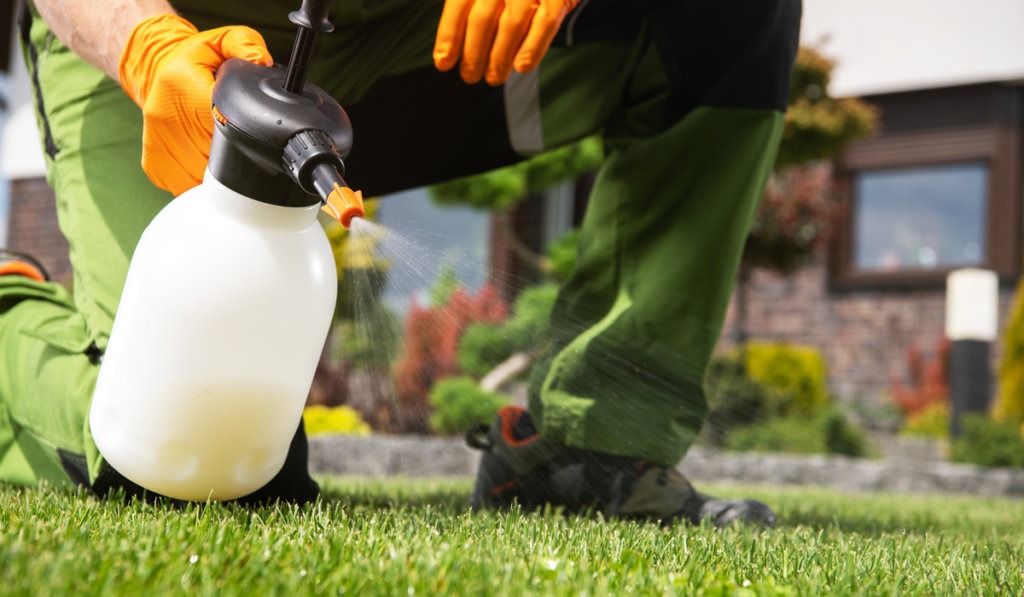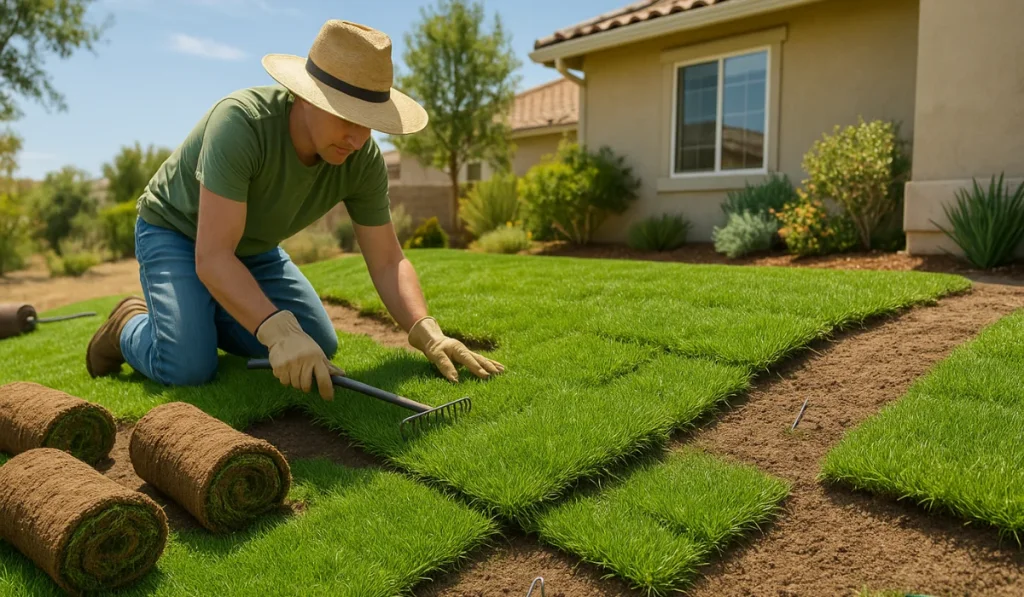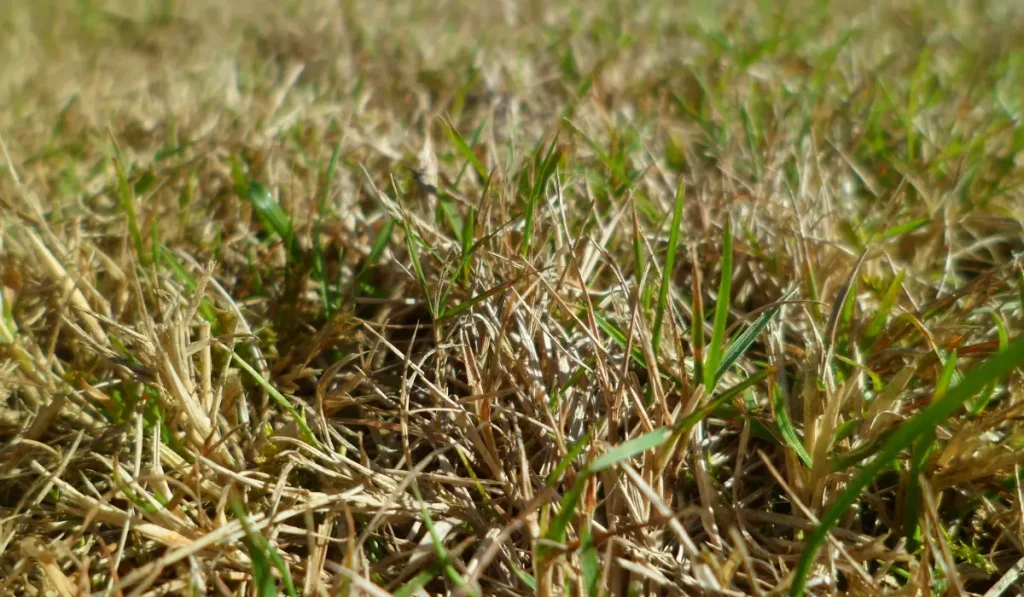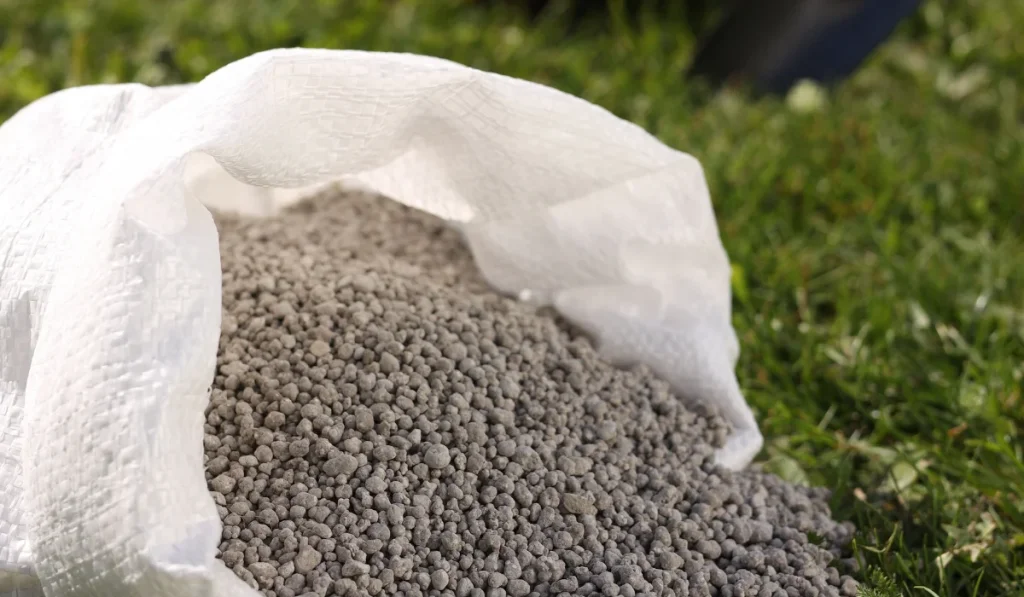Grubs are the nemesis of every homeowner. These little buggers wreak havoc on a lawn, making it difficult to keep up with mowing and landscaping. If you’re looking for ways to get rid of grubs, look no further!
In this post, we’ll provide you with some tips on how to eradicate these pests from your yard. So read on and take heed—those grubs won’t stick around for long.
Key Takeaways
- Grubs are some of the most frustrating pests for home lawns, leaving behind dead brown patches of grass.
- White grub worms can be eliminated with a variety of natural products, including neem oil and milky spore disease.
- You can also use a chemical, grub-killing product that contains active ingredients like carbaryl to help get rid of grubs and stop them from coming back.
What Are Grubs?
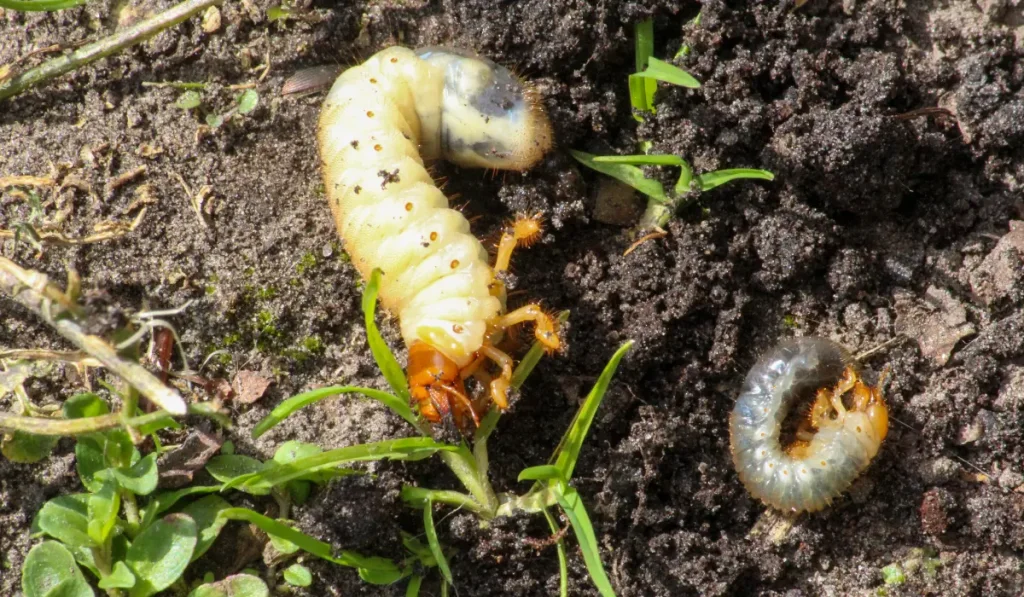
Technically, they are the larvae of various types of beetles, such as June beetles and Japanese beetles.
These wiggly little creatures hatch in the spring and summer. At just an inch long, they aren’t all that threatening at first glance, but rest assured; they can wreak havoc on your lawn.
White grub worms curl up into a C-shape when they are disturbed and burrow deep into the lawn, feeding on the grass roots. One or two grubs aren’t necessarily a problem, but a large group of them can be a serious problem.
So where did these nasty grubs come from? They’re a natural part of the ecosystem, which is why they are so common, but some lawns are more prone to an infestation than others. That’s because grubs tend to show up when lawns are overwatered or are suffering from some other problem, like disease.
Some of this has to do with the overall health of your lawn. A weak, unhealthy lawn will be more vulnerable to an invasion than a healthy lawn. The type of grass also plays a role. Ryegrass, for instance, is irresistible to grubs.
Signs of a Grub Infestation
The first sign of a problem is the appearance of brown, dead patches in your lawn. These can be caused by many other things like overwatering or underwatering, fungal infections, over-fertilizing, or even a dog that’s a bit overzealous about where he goes to the bathroom!
However, you will know that it’s grubs if you can pull up the grass and the sod separates easily from the soil. This indicates that grubs have chewed through the roots entirely.
Signs of infestation usually appear in mid to late summer; this can vary though.
Another sign of grub activity is increased animal presence. Grubs are a favorite food of many types of animals, including birds, skunks, and raccoons. If you see these animals or if you notice lots of holes in your lawn, that’s a sign that they’re digging or pecking in search of grubs.
Other signs include:
- A spongy turf
- Seeing lots of white grubs on the soil surface
- Brown, straw-like patches on the lawn
Once you suspect grubs, it’s important to do a soil test. Remove a square foot of grass about three inches deep from one of these brown areas. If you see less than five grubs, you’re probably okay—that’s a normal population of grubs.
If there are ten or more, that’s an infestation, and you need to take action!
How to Get Rid of Lawn Grubs
There are several different ways you can get rid of lawn grubs. Here are a few of the best tried and true techniques.
Beneficial Nematodes
Beneficial nematodes are parasitic worms that are naturally occurring in the soil. These microscopic creatures release bacteria into the grubs, killing them off in an organic and eco-friendly way.
Although releasing beneficial nematodes is one of the most effective ways to get rid of grubs, it’s a slow process. They take several years to be fully effective.
If you decide to release beneficial nematodes, you can purchase them online or at a garden store. Release them in the afternoon as soon as you receive them. And water them thoroughly after the release.
Milky Spore
Milky spore disease is similar to beneficial nematodes because it is all natural and safe to use around children and pets. It is a bacterium that is deadly to certain types of grubs (particularly Japanese beetle larvae).
Sprinkle the milky spore powder onto your lawn and watch the grub problem go away. Again, though, it takes up to three years to be fully effective. That said, it’s a natural way to get rid of grubs that won’t harm any other soil life like a chemical pesticide might, so it’s worth considering.
Encourage Birds
Birds love feasting on grubs. They feed on both the adult and larval versions of these pests.
Consider installing a few birdhouses near your home and lawn. You’ll likely start seeing birds, like wrens, flying around with grub worms hanging from their beaks. The increased feeding activity should help reduce the population of grubs. Just keep in mind that the birds may also start pecking and digging up the lawn to find the food, which can be problematic in itself.
Dry Things Out
Although you want to avoid underwatering your lawn, one way to make your lawn less hospitable to grubs is to let things dry out. Grubs need moist soil to thrive, which is why they aren’t as common in drought-like conditions.
Try Neem Oil
Neem oil is another natural treatment that you can use to get rid of grubs. It prevents grubs from feeding and growing into adults, breaking the life cycle. Neem oil works.
The active ingredient in neem oil is azadirachtin, which reduces insect feeding patterns and interferes with their hormones. This makes it difficult for them to grow and lay their eggs.
Combine neem oil with water and spray it on your grub-infested lawn with a sprayer. Make sure you spray liberally over the areas of dead grass so you can get the larvae that are hiding there.
Use Dish Soap
Dish soap is another option to explore. It’s not 100% effective at controlling grubs since it only kills on contact, but it can help you control a mild infestation. Combine dish soap with water and spray it over the area of infestation. It should kill any grubs and beetles.
Use a Pesticide
Insecticides may not be your first choice when you’re looking for ways to get rid of grubs, but they can be highly effective when it comes to lasting grub control.
There are both preventive and curative pesticides you can use. Curative pesticides get rid of existing larvae, while preventative products prevent them from coming back.
A grub control product usually contains active ingredients like carbaryl or trichlorfon. You’ll want to read the instructions carefully when you apply these products, as each brand and formulation has different instructions in terms of when and how to apply.
You’ll usually spray or use a broadcast spreader to administer the chemical to the affected areas.
In general, if you use a chemical pesticide, you should plan on treating for grubs in the late spring through early summer months for best results.
Preventing Lawn Grubs in the Future
The best thing you can do to prevent lawn grubs from taking hold in the future is to keep your lawn as healthy as possible.
The adult beetles don’t like to lay their eggs in tall, healthy grass. Keep the lawn properly fertilized, avoid overwatering and underwatering, and above all, make sure you mow high. Let the grass grow taller, at least two inches or so in height.
You should try to fertilize and seed your lawn in the fall (as long as your grass type is amenable to being fertilized in the autumn). Most beetles won’t lay their eggs in grass that’s lush and healthy. It’s far easier for them to infest lawns that have weaker roots, since they’ll be able to burrow more deeply.
The best time to fertilize is in the early fall since this is when most species of grub-producing beetles lay their eggs, but some grass types may need fertilizing in the early spring months instead.
By seeding and fertilizing, you can repair the grub damage (even significant damage) and prevent new beetles from laying new eggs. Fertilize after reseeding to help the lawn regenerate and water deeply.
The Bottom Line
If you’re dealing with an infestation of grubs, there are things you can do to get rid of them and prevent them from coming back.
Consider using one or more of the tips we’ve shared to help eliminate these pests from your lawn for good.
